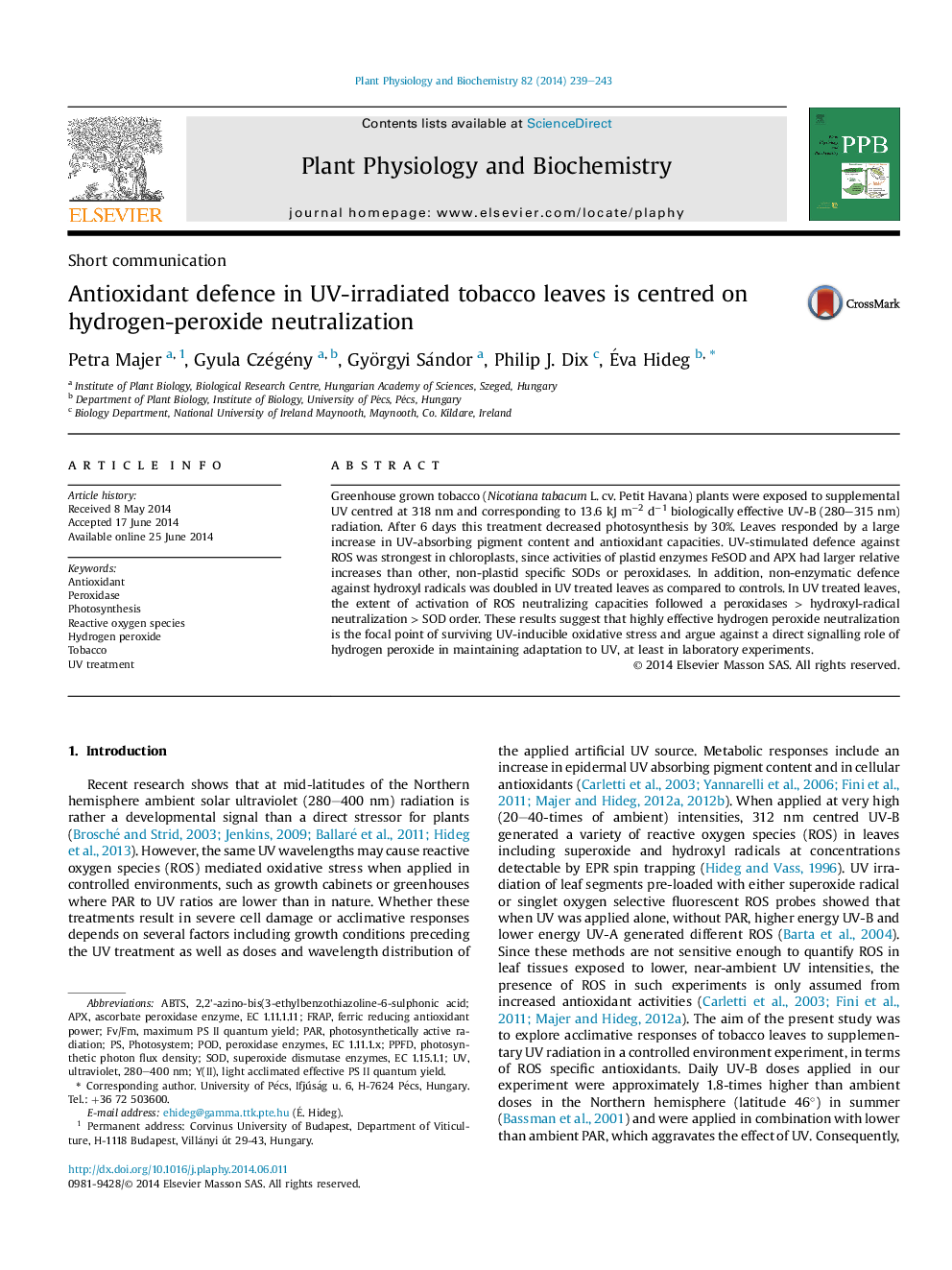| کد مقاله | کد نشریه | سال انتشار | مقاله انگلیسی | نسخه تمام متن |
|---|---|---|---|---|
| 2016106 | 1541939 | 2014 | 5 صفحه PDF | دانلود رایگان |
• Supplemental UV decreased photosynthesis by 30% and activated antioxidant defence.
• Defence against ROS focussed on H2O2 (peroxidases, especially APX).
• Chloroplast antioxidants APX and Fe-SOD were activated more than other pathways.
• Under low PAR/UV conditions acclimation to UV may not rely on H2O2 signals.
Greenhouse grown tobacco (Nicotiana tabacum L. cv. Petit Havana) plants were exposed to supplemental UV centred at 318 nm and corresponding to 13.6 kJ m−2 d−1 biologically effective UV-B (280–315 nm) radiation. After 6 days this treatment decreased photosynthesis by 30%. Leaves responded by a large increase in UV-absorbing pigment content and antioxidant capacities. UV-stimulated defence against ROS was strongest in chloroplasts, since activities of plastid enzymes FeSOD and APX had larger relative increases than other, non-plastid specific SODs or peroxidases. In addition, non-enzymatic defence against hydroxyl radicals was doubled in UV treated leaves as compared to controls. In UV treated leaves, the extent of activation of ROS neutralizing capacities followed a peroxidases > hydroxyl-radical neutralization > SOD order. These results suggest that highly effective hydrogen peroxide neutralization is the focal point of surviving UV-inducible oxidative stress and argue against a direct signalling role of hydrogen peroxide in maintaining adaptation to UV, at least in laboratory experiments.
Journal: Plant Physiology and Biochemistry - Volume 82, September 2014, Pages 239–243
